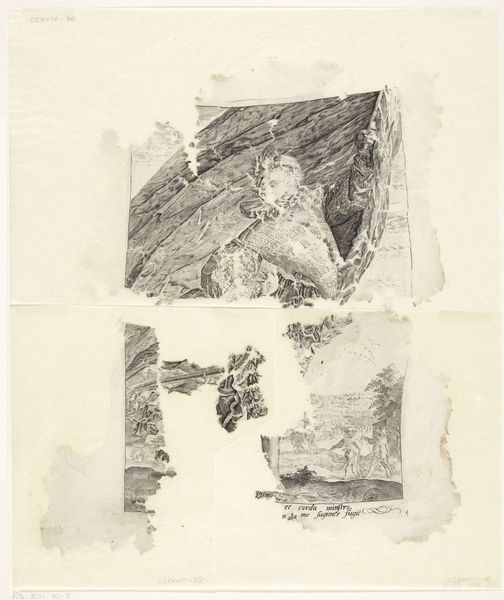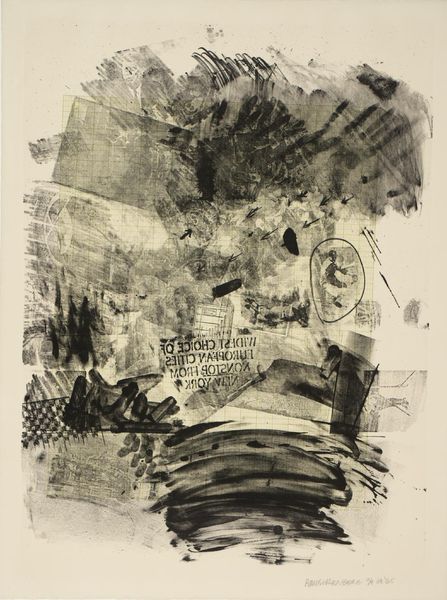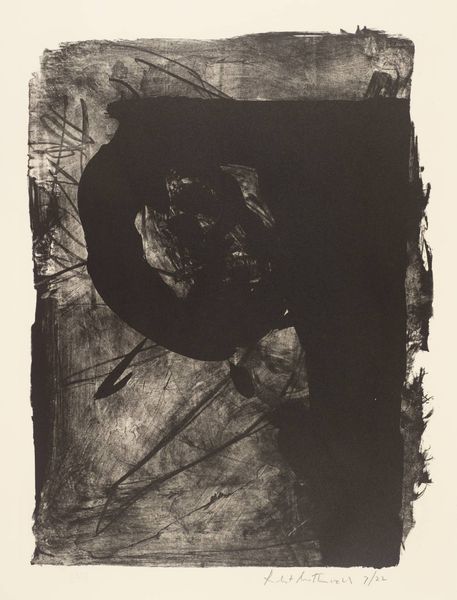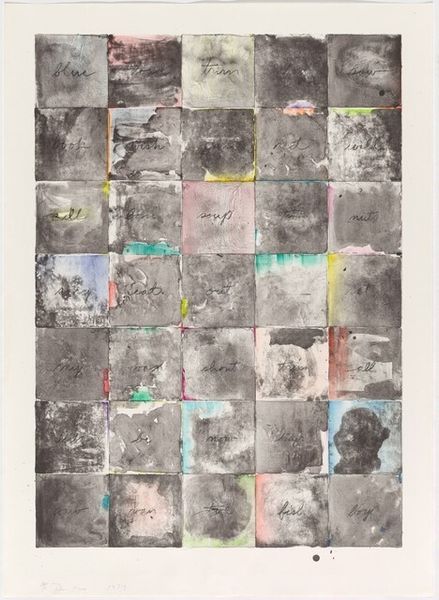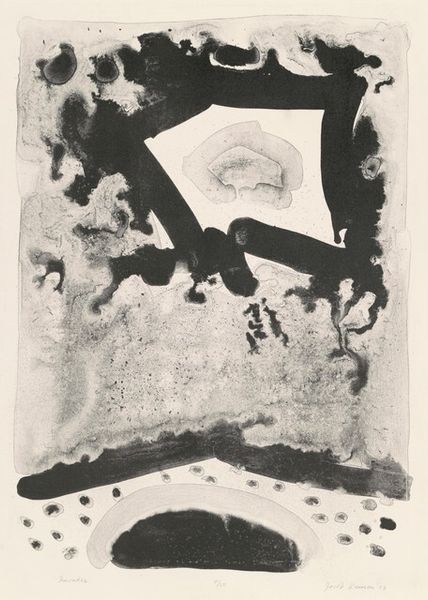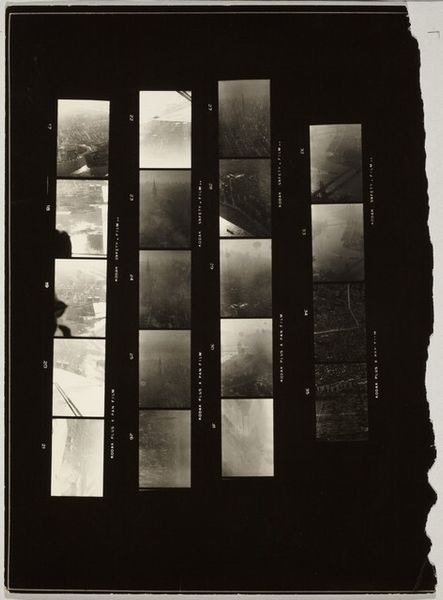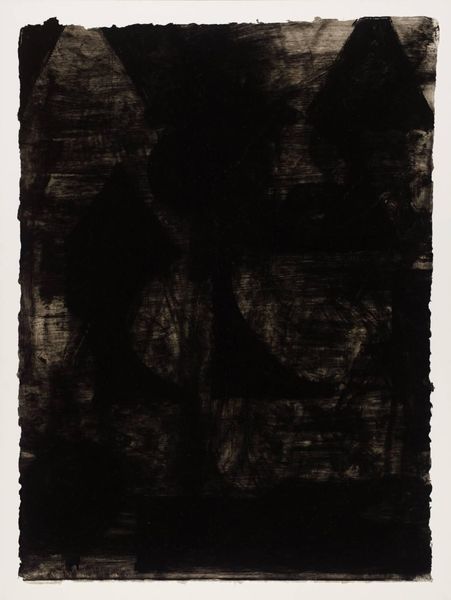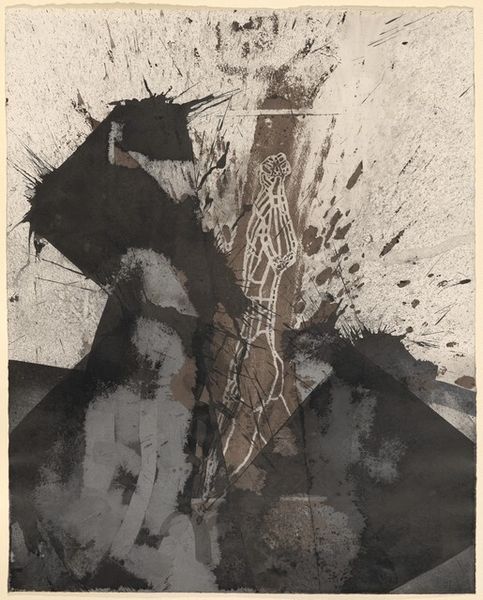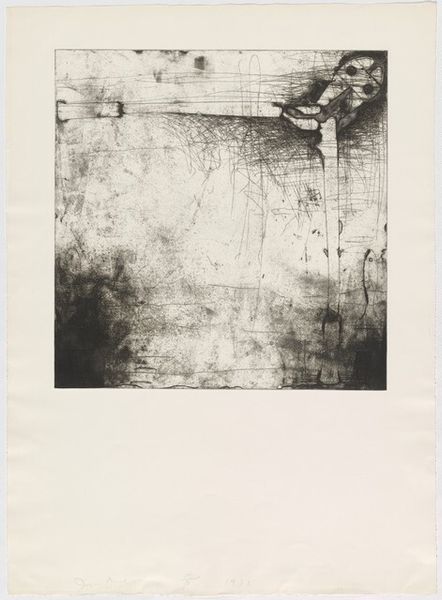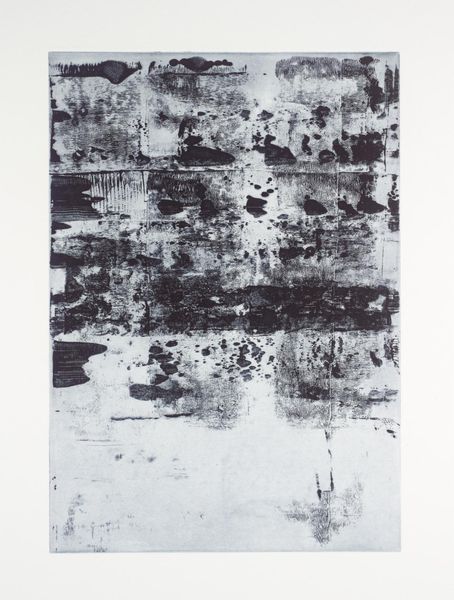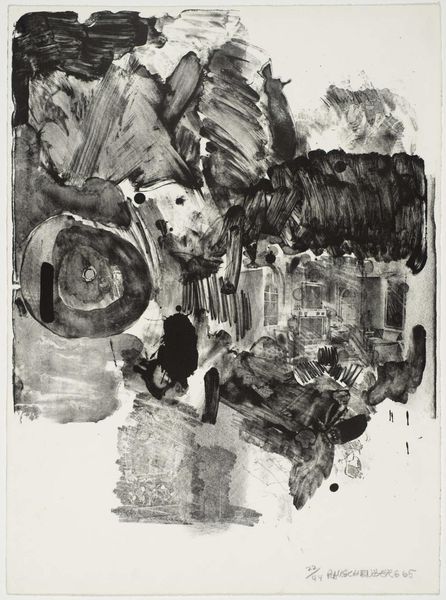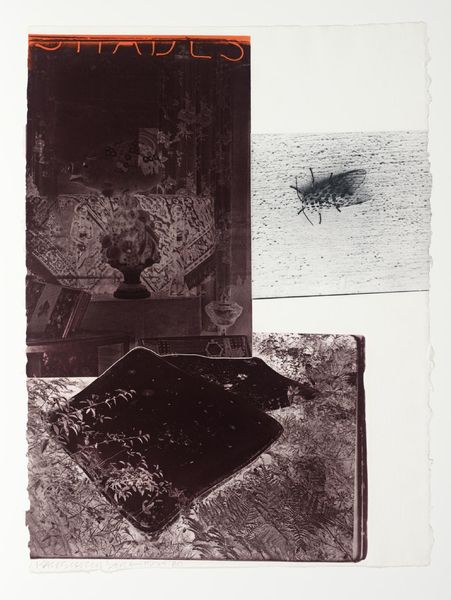
Dimensions: image: 803 x 584 mm
Copyright: Artwork © Robert Rauschenberg Foundation | CC-BY-NC-ND 4.0 DEED, Photo: Tate
Curator: Here we have Robert Rauschenberg's print, "Pledge," from 1968, held in the Tate Collections. Rauschenberg, born in 1925, was deeply engaged with American social and political issues. Editor: My first impression is one of fragmented unease. The collage of images creates a sense of disjointed narrative, like snippets of memories or news reports colliding. Curator: Indeed, Rauschenberg used his art to engage with the Vietnam War and broader social unrest, a visual commentary on the media's role in shaping public perception. Editor: The prominent eye, perhaps a symbol of observation or surveillance, alongside images of conflict and everyday life, evokes a feeling of being watched, manipulated even. Curator: His use of photo transfer and silkscreen techniques allowed him to rapidly reproduce and combine images, mirroring the saturation of media in contemporary society. Editor: There's a tension between the seemingly random arrangement and the recurring motifs of conflict, raising questions about power, protest, and the individual's place within it all. Curator: Absolutely. The print serves as a potent reminder of the artist’s commitment to using art as a tool for social commentary. Editor: It really leaves you contemplating the weight images carry and their impact on our understanding of the world.
Comments
Join the conversation
Join millions of artists and users on Artera today and experience the ultimate creative platform.
tate 8 months ago
⋮
The lithograph Pledge was executed at the same time as Promise (reproduced Rauschenberg Graphic Art, 1970, p.19 no.57) in late summer 1968. Both works incorporate magazine and newspaper images, a central feature of Rauschenberg's paintings and prints. The photographic transfers used in Pledge, reading from left to right and from top to bottom, are: a motor car with a horse's head protruding from the back right-hand side window; a strip of three images of baseball players; a detail of a girl's face which closely resembles the Mona Lisa; a train crash; a farmer with a box of plants (a reverse image of that used in Visitation II, 1965, Tate Gallery P77107); four black men on the steps of a tenement block; a group of soldiers training in unarmed combat; the screw at the base of a light bulb; and a skyscraper seen from below. Pledge and Promise were executed in conjunction with the exhibition of the large sculpture construction Solstice at Dokumenta IV in Kassel, Germany, in 1968. Further reading:Rauschenberg Graphic Art, exhibition catalogue, Institute of Contemporary Art, University of Pennsylvania, Philadelphia 1970, reproduced p.18 no.29The Tate Gallery 1984-86: Illustrated Catalogue of Acquisitions, London 1988, pp.448-9, reproducedTerry RiggsFebruary 1998

